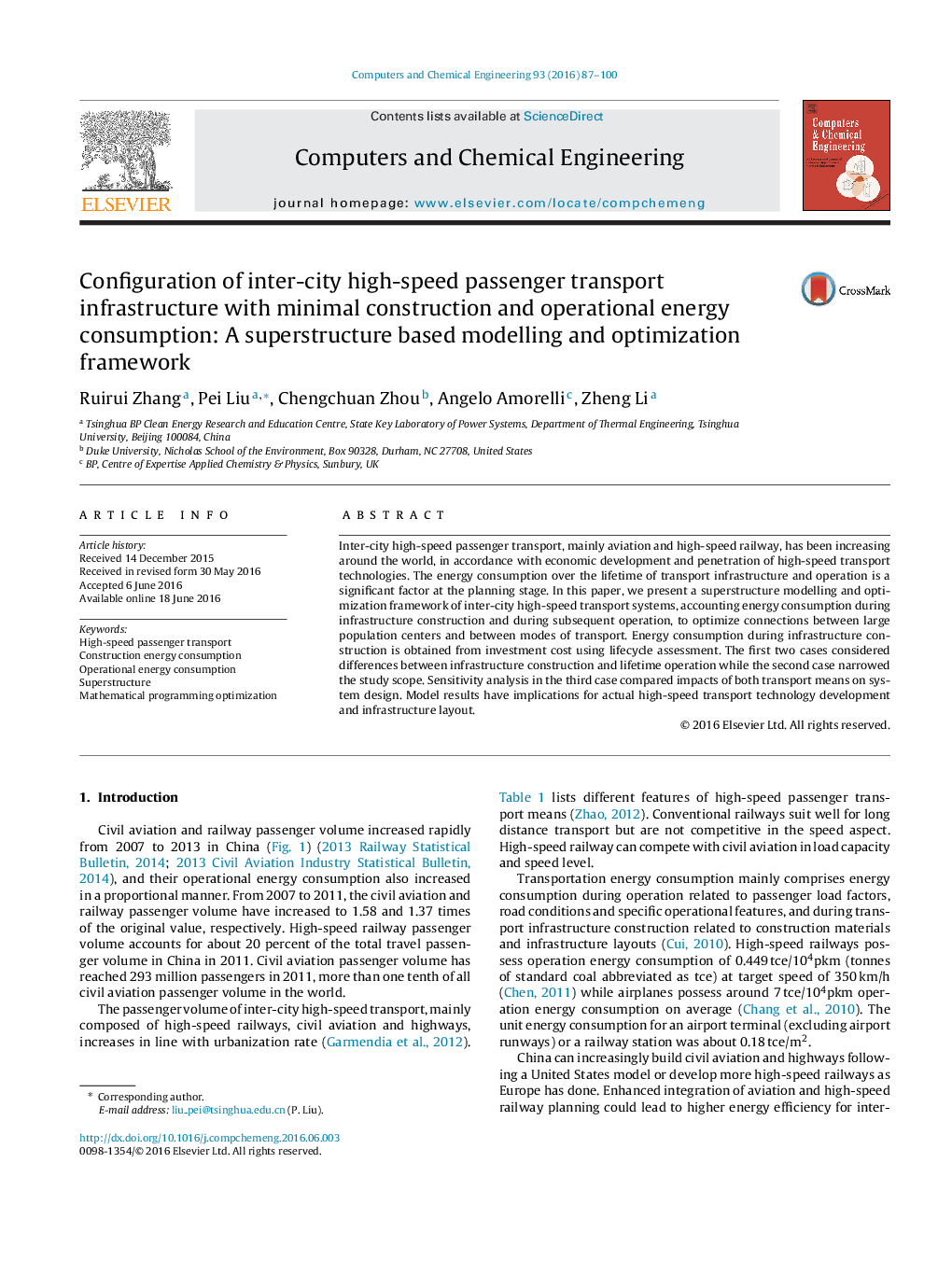| Article ID | Journal | Published Year | Pages | File Type |
|---|---|---|---|---|
| 171981 | Computers & Chemical Engineering | 2016 | 14 Pages |
•A superstructure modelling and optimization framework is proposed.•Inter-city high-speed transport system design is optimized.•A life-cycle analysis method for energy consumption calculation is proposed.•Aviation and high-speed railway operation energy data dominate in lifetime view.
Inter-city high-speed passenger transport, mainly aviation and high-speed railway, has been increasing around the world, in accordance with economic development and penetration of high-speed transport technologies. The energy consumption over the lifetime of transport infrastructure and operation is a significant factor at the planning stage. In this paper, we present a superstructure modelling and optimization framework of inter-city high-speed transport systems, accounting energy consumption during infrastructure construction and during subsequent operation, to optimize connections between large population centers and between modes of transport. Energy consumption during infrastructure construction is obtained from investment cost using lifecycle assessment. The first two cases considered differences between infrastructure construction and lifetime operation while the second case narrowed the study scope. Sensitivity analysis in the third case compared impacts of both transport means on system design. Model results have implications for actual high-speed transport technology development and infrastructure layout.
